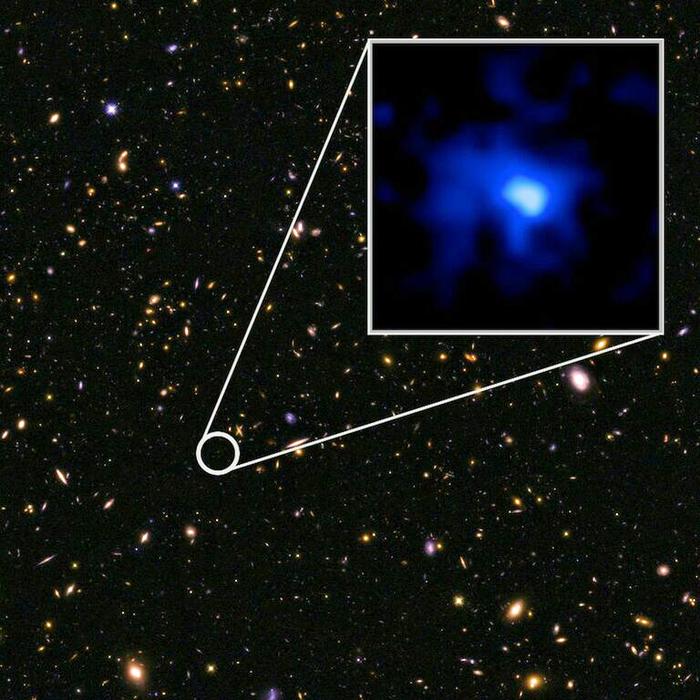Astronomers have reported an exceptionally luminous galaxy from when the universe was only 5% of its present age - more than 13 billion years in the past.
The galaxy, EGS-zs8-1, was originally identified based on its particular colors in images from NASA's Hubble and Spitzer telescopes and the team determined its exact distance from Earth using the powerful MOSFIRE instrument on the W.M. Keck Observatory's 10-meter telescope in Hawaii. It is the most distant galaxy currently measured and one of the brightest and most massive objects in the early universe.
Age and distance are vital to understanding the universe. The light we see from our Sun takes just eight minutes to reach us, while the light from distant galaxies we see via today's advanced telescopes travels for billions of years before it reaches us -- so we're seeing what those galaxies looked like billions of years ago.

EGS-zs8-1 sets a new distance record. Credit: NASA, ESA, P. Oesch and I. Momcheva (Yale University), and the 3D-HST and HUDF09/XDF teams
"It has already built more than 15% of the mass of our own Milky Way today," said Pascal Oesch, a Yale astronomer and lead author of the study. "But it had only 670 million years to do so. The universe was still very young then."
The new distance measurement also enabled the astronomers to determine that EGS-zs8-1 is still forming stars rapidly, about 80 times faster than our galaxy.
Only a handful of galaxies currently have accurate distances measured in this very early universe and the MOSFIRE instrument allows astronomers to efficiently study several galaxies at the same time. Measuring galaxies at extreme distances and characterizing their properties will be a major goal of astronomy over the next decade.
However, they may need to do it somewhere else. Environmental and humanities activists have declared that astronomy is ruining the ecology and native lands in Hawaii and want existing telescopes gone and are blocking construction of a new one.






Comments